The Gift and Power: Translating the Book of Mormon
$34.95
- “Contributes new and exciting research” — Mormon Times
- “A game changer.” — Blair Hodges
- “An excellent starting point for one to start thinking about questions surrounding the translation process.” — The Mormon Book Review
2012 Best Literary Criticism Award, Association for Mormon Letters



Available in ebook for Kindle, Nook, Kobo, Google Play, and Apple.
Also available through Amazon and Deseret Book.
Download a free sample preview.
Book Description:
The Book of Mormon was presented to the world as the translation of an ancient text engraved on golden plates more than 180 years ago. However, the faithful assurance that it is a translation has not had an accompanying understanding of how that translation took place. How could the ill-educated Joseph Smith translate the ancient text on the golden plates into the English Book of Mormon upon which so many base not only their faith, but a willingness to completely change their lives?
The Gift and Power: Translating the Book of Mormon examines the various issues surrounding that translation. How does the fact of the translation fit into a magical worldview in which Joseph had a place as a village seer? What might that context mean for our understanding of the text?
This work explores the kind of translation the Book of Mormon represents. Did Joseph Smith or the marvelous instruments do the actual work of translation? Is it a tight or loose translation? How closely tied is the English text to the source text from which it was translated? What about Hebraisms in the text? What about the lengthy passages of King James English in it?
The volume concludes with the most puzzling and persistent questions: How did the seer stones work? Why didn’t Joseph retranslate the Book of Lehi? How did revival language make its appearance in the book? Why couldn’t Oliver Cowdery translate? Brant Gardner offers answers to these questions. The result is a faithful description of how God used a human prophet to translate a transcendentally important scriptural text.
Comprehensive Table of Contents:
.
Introduction
Part 1: History and the Translation Process
1. Translation Stories Become History
2. Understanding Joseph: Magician or Prophet?
3. What Is a Magic Worldview?
4. The Social Interface between Magic and Religion
5. Magic and Religion in Tradition and Transition
6. Joseph’s Two Palmyras
Christianity and Christian Magic in Joseph’s Palmyra
The English Heritage of American Magic
7. Magic in Palmyra: Divining Rods and Seer Stones
8. Money-Digging, Confidence Men, and Joseph
9. The Event That Changed Everything
10. Miracle, Not Magic: Establishing Mormonism
11. The Creation of a Sacred Communal Story
12. Important Stories, Told Importantly
A Transcript Becomes a Sealed Book
Interpreters Become the Urim and Thummim
A Hill Becomes Cumorah
Indians Become Lamanites
Reformed Egyptian Becomes Hebrew
Part 2: What Kind of Translation Is the Book of Mormon?
13. What Does It Mean to Translate?
14. Theories of Book of Mormon Translation
The Early Inerrant Theory of Translation
In the Language of the Prophet
Royal Skousen’s Theory of the Translation
Analytical Categories for Examining the Evidence
15. Evidence for Literalist Equivalence
The Process of Translating Names
The Archaic Vocabulary of the English Translation
Hebraisms and the Plate Text
Intertextual Quotations
16. Evidence for Functional or Conceptual Equivalence
Translation and Grammatical Structure
Vocabulary and Cultural Content
Modern Vocabulary and Idiomatic Expressions
The Influence of the King James Version
17. Structures in the Book of Mormon
18. Joseph’s Translations Involving Biblical Texts
The Joseph Smith Translation of the Bible
Translating Biblical Texts in the Book of Mormon
19. From Plate Text to English Translation
Vocabulary-Based Evidence
Syntax-Based Evidence
Structure-Based Evidence
Deciding Between Functional or Conceptual Equivalence
Part 3: Translating the Book of Mormon
20. Who Translated the Book of Mormon?
21. How Did Joseph Translate?
Using a Seer Stone
Seeing in a Stone
Translating with a Stone
22. Assembling the Puzzle
Why Was Most of the Translation Functionalist Equivalence Rather than Literal?
Why Were Some Translations Literalist Equivalence?
Why Were Some Translations Conceptual Equivalence?
Why Didn’t Joseph Retranslate the Book of Lehi?
Why Did Joseph Believe the Interpreters or Seer Stone Were Essential?
Why Did Joseph Stop Translating with the Interpreters?
Why Did Joseph Stop Using the Seer Stone for Revelations?
Why Is the Book of Mormon Translated Correctly, but Not the Bible?
Why Do Skousen and Others See Specificity in the Text?
Why Does the Book of Mormon Use King James Version Style?
How Did We Get the Isaiah Passages?
How Did We Get the New Testament-Influenced Passages?
How Did We Get Revival Language?
How Did Literary Structures Survive Translation?
Why Couldn’t Oliver Translate?
Epilogue: The Divine and Mundane in Translation
Bibliography
Index
Praise for The Gift and Power:
“Brant A. Gardner’s new book is a game changer—a paradigm-bending exercise combining rigorous methodology with creativity in a historical analysis of the Book of Mormon translation story. . . . Go read this wonderful, provocative, creative book. You may disagree with his theory, but the conversation takes a big step forward in this book. I can’t recommend The Gift and Power:Translating the Book of Mormon enough.” — Blair Hodges, By Common Consent.
“This is a wonderful book about how the Book of Mormon is actually translated.” — Martin Tanner, host Religion Today
“When interviewing Terryl Givens, I said, it’s hard for me to imagine a better hope in credible apologetics than Terryl Givens, I think you (Brant Gardner) belong in his class.” — John Dehlin, Mormon Stories Podcast.
“Whether or not one agrees fully with its conclusions, Gardner’s book contributes new and exciting research and material worthy of consideration by all interested in exploring practical concepts of revelation and the sacred and inspired transmission of scripture by the gift and power of God.” — David Tayman, Mormon Times, Deseret News.
“Gardner’s examination of the text and the scholarship is very thorough and his use of cognitive science should pave the way to further research.” — Steve Fleming, Juvenile Instructor
“This book does not provide indisputable answers, but it is extremely convincing. Gift and Power provides an excellent starting point for one to start thinking about questions surrounding the translation process. Additionally, unlike many scholars, Gardner writes in a style that is highly readable for a non-academic audience.” — Kirk Caudle, The Mormon Book Review
About the Author:
 Brant A. Gardner earned his M.S. in anthropology (specializing in Mesoamerican ethnohistory) from the State University of New York at Albany. He is the author of the six-volume Second Witness: Analytical and Contextual Commentary on the Book of Mormon. He has presented papers at the Foundation for Apologetic Information and Research (FAIR), the Book of Mormon Archaeological Symposium, and Sunstone. His other published works include chapters in Estudios de Cultura Nahuatl and Symbol and Meaning beyond the Closed Community: Essays in Mesoamerican Ideas, and articles in the FARMS Review, Sunstone, and Meridian Magazine. Brant and his wife, Valerie, have four children and eleven grandchildren.
Brant A. Gardner earned his M.S. in anthropology (specializing in Mesoamerican ethnohistory) from the State University of New York at Albany. He is the author of the six-volume Second Witness: Analytical and Contextual Commentary on the Book of Mormon. He has presented papers at the Foundation for Apologetic Information and Research (FAIR), the Book of Mormon Archaeological Symposium, and Sunstone. His other published works include chapters in Estudios de Cultura Nahuatl and Symbol and Meaning beyond the Closed Community: Essays in Mesoamerican Ideas, and articles in the FARMS Review, Sunstone, and Meridian Magazine. Brant and his wife, Valerie, have four children and eleven grandchildren.
Podcasts and Radio:
An interview with Brant Gardner on the Mormon Stories Podcast.
An interview with Brant Gardner on the Mormon Discussion Podcast.
An interview with Martin Tanner, on Religion Today.
An interview with The Mormon Book Review Podcast.
More Information:
379 Pages
Hardcover, ISBN: 978-1-58958-131-9
Published August 2011

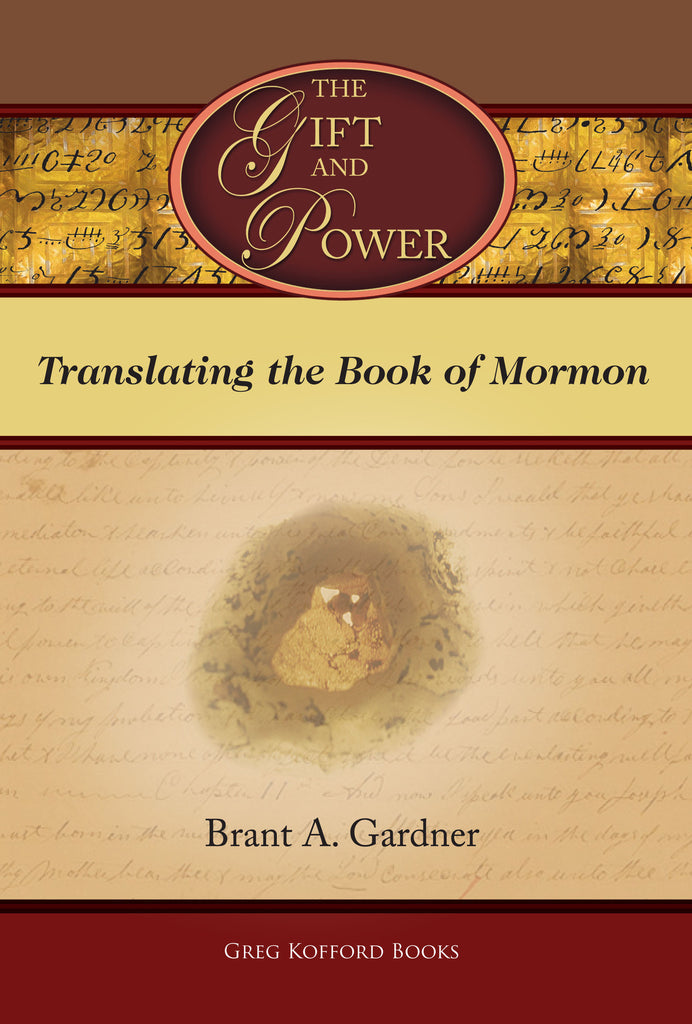
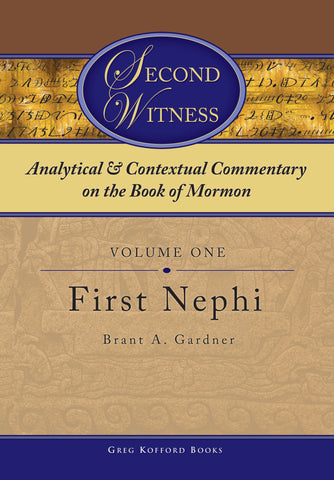
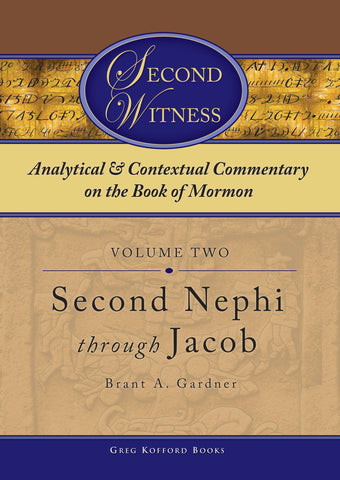
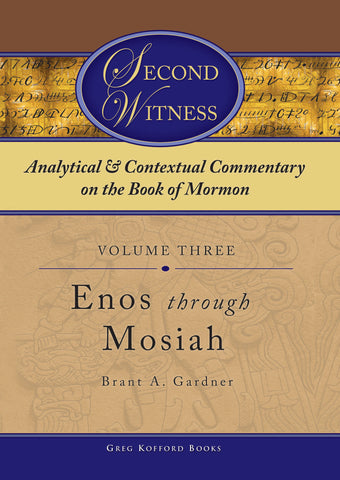
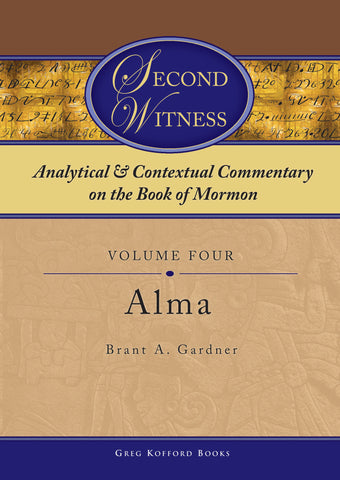
Share this item: